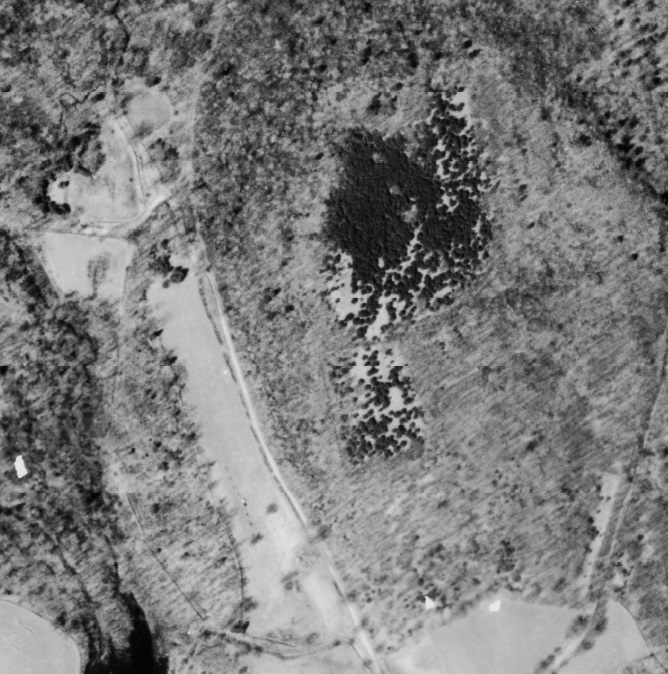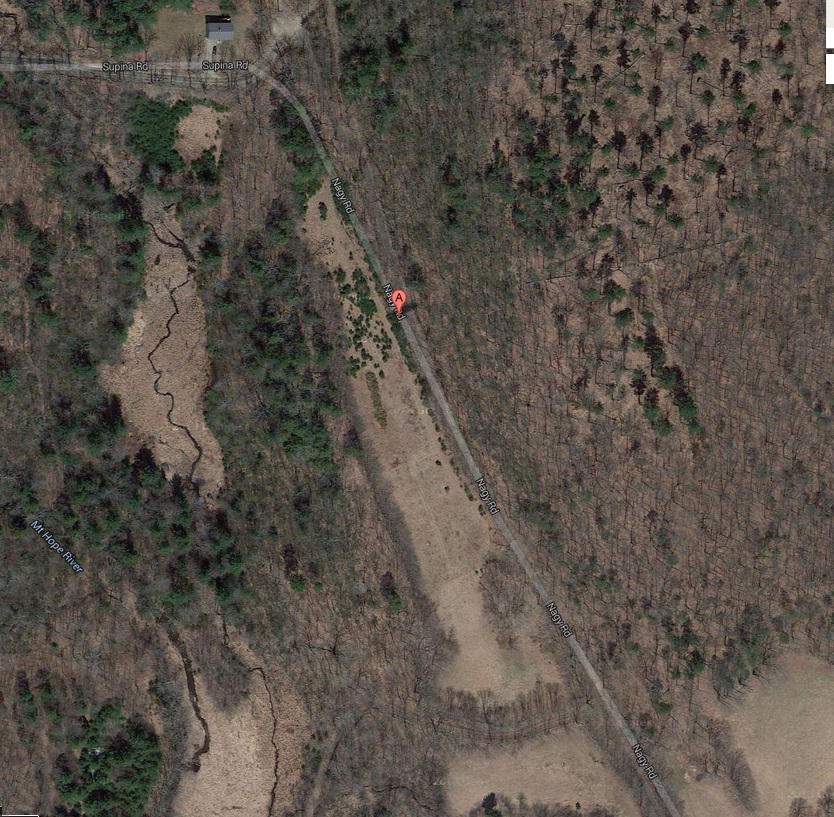Went on a "Walktober" walk at Cranberry Hill Farm on Nagy Road. This was the old Nagy farm -- Hungarians settled in Ashford in the early 20th century like Swedes in Woodstock and Finns in Canterbury taking over the worn down but cheap upland farms. One of the Nagys who grew up here still lives across the street and regularly putters about helping on the farm.
The new owners have been working for the last decade to restore it to a working farm. They have a small vegetable CSA in operation, do some maple sugaring, and are preparing to start bringing in livestock again.
This farm, by the way, is maybe a half mile as the crow flies (and one heck of a rugged hike if you tried going cross country, though I think some woods roads lead back to it) from where took photos of a large brush fire off of Boston Hollow last year here and here
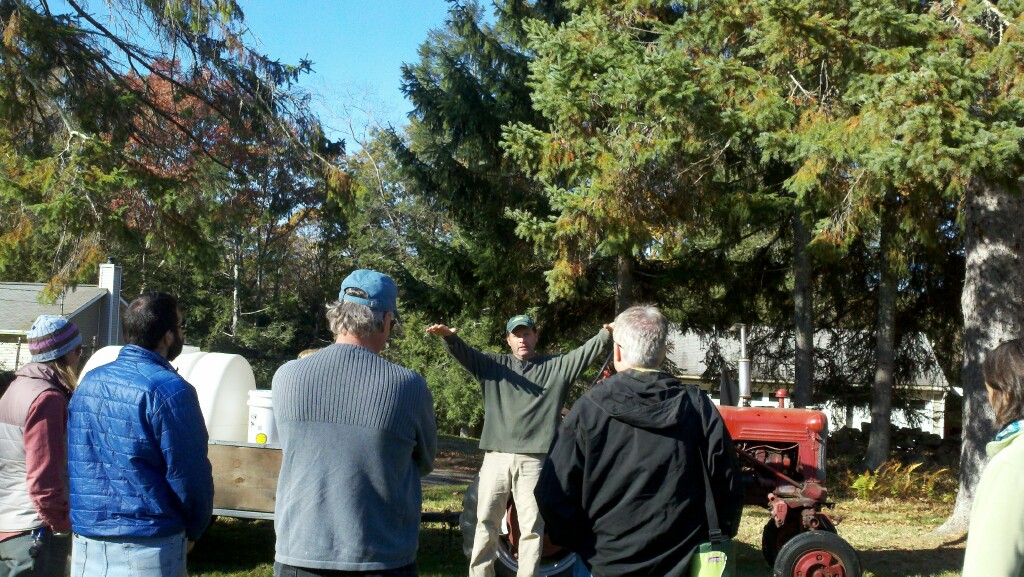
The sugar shack which replaced the old milkhouse.
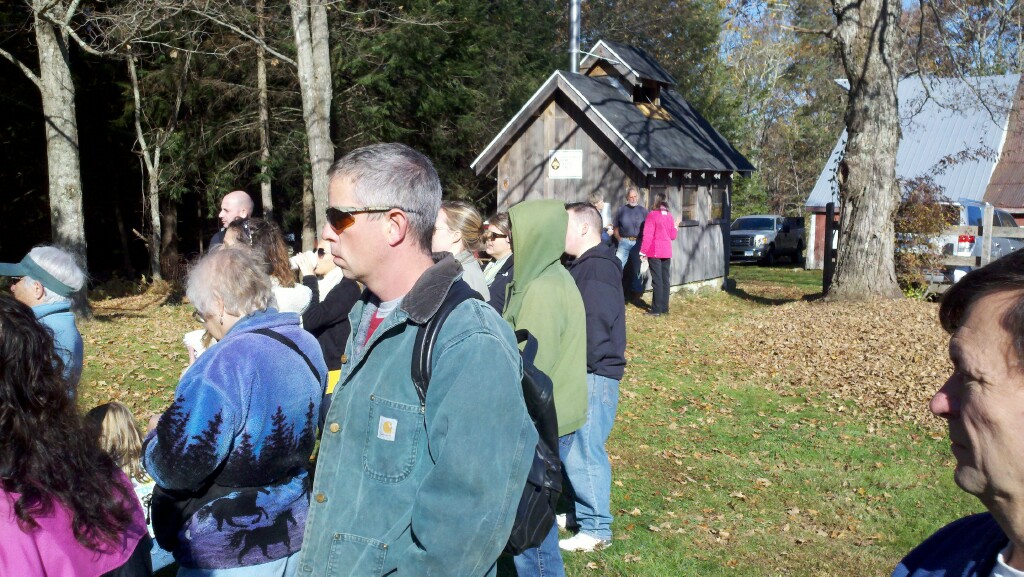
Some of the gardens and the old chicken coop. Don't see many of these old coops of this style and size left standing! I reckon you see about four styles of coops around -- converted 19th century barns, which just have a large number of windows installed on the southern exposure, simple coops like this purpose-built one, two and three story coops with truck access to central grain rooms that became more common in the late 30s into 50s, and finally in the 1960s massive pole barns took over the role before poultry farming largely collapsed in the region in the late 1980s.
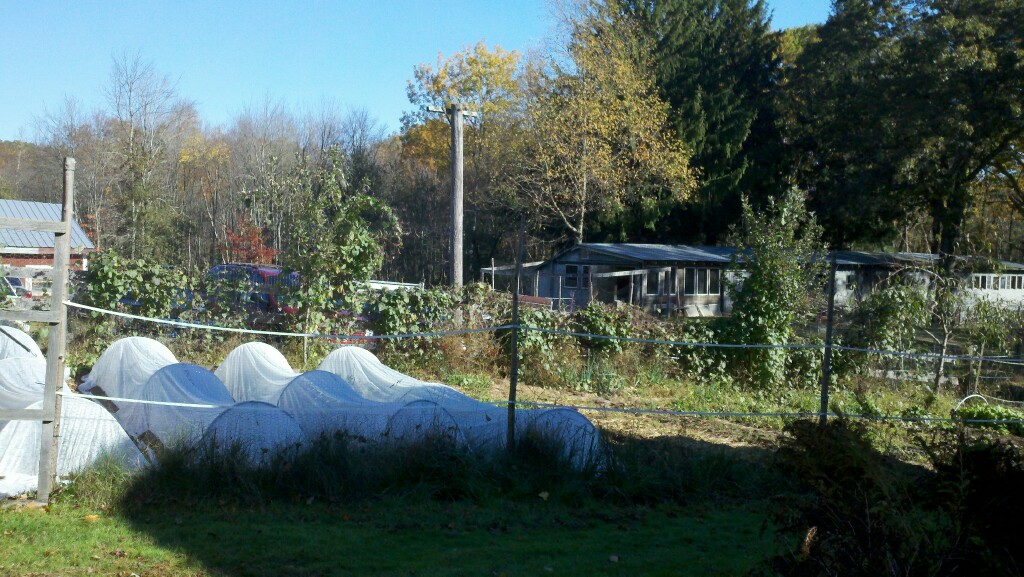
Dairy barn -- the Nagys milked 14 head until 1959.

God, its killing me this year I wrapped up my garden by late September...and they have some strawberries! I know this is an exceptional mild (and dry!) October we're having, but still...strawberries on the 20th of October! What kind of global warming meets genetic witch doctory is this! The variety is "Seascape" which a quick google says is noted for its reliable fall crops.
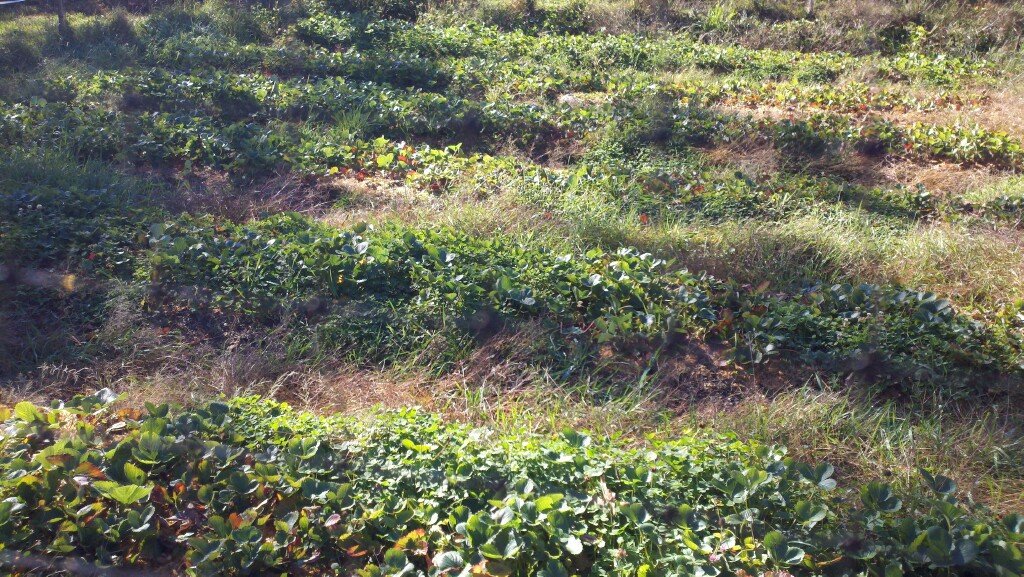
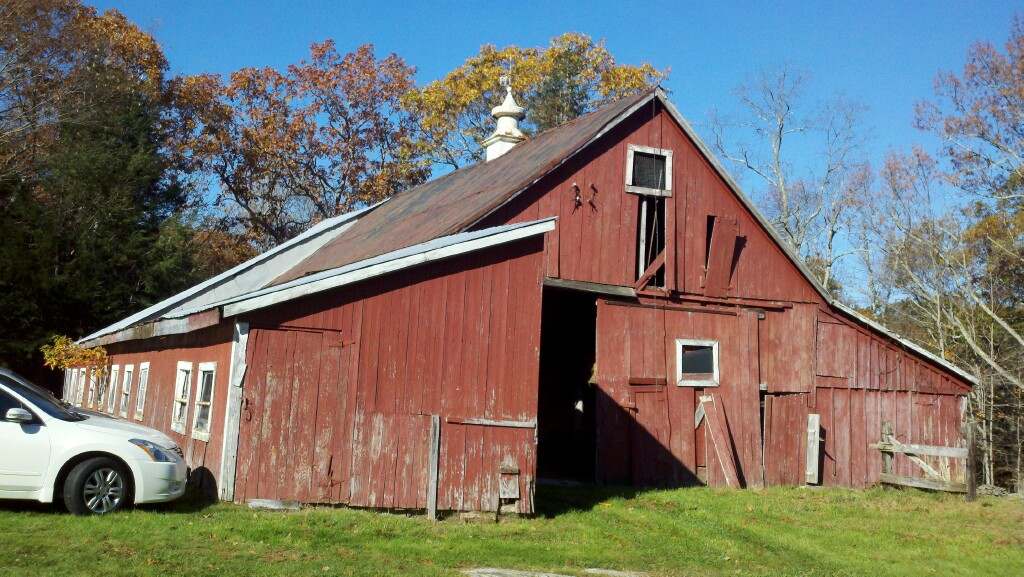
The house built in 1929 to replace the original, very small house.
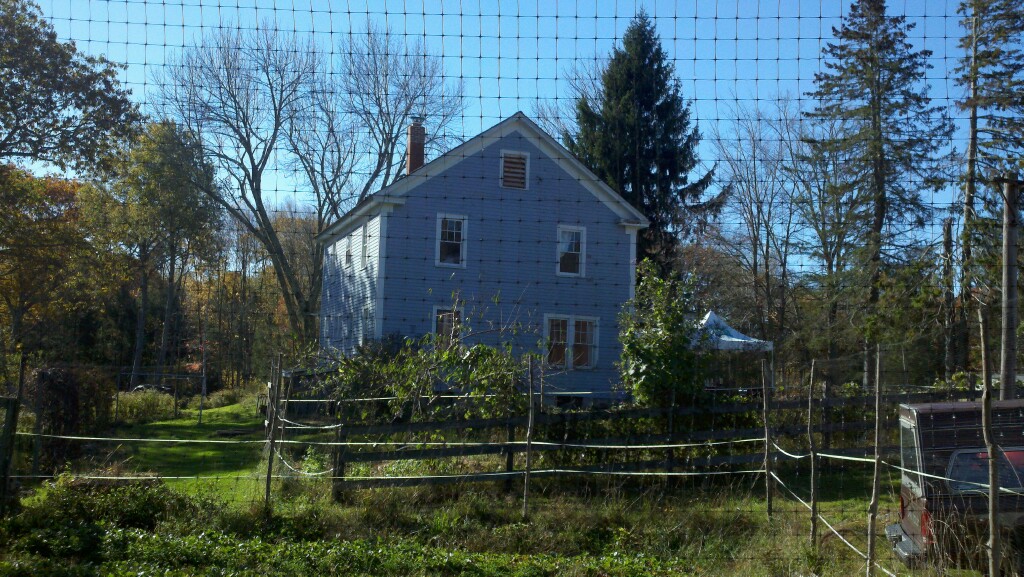
Yep...not going to get the apples off the top of that tree even with one of those picking stick things...
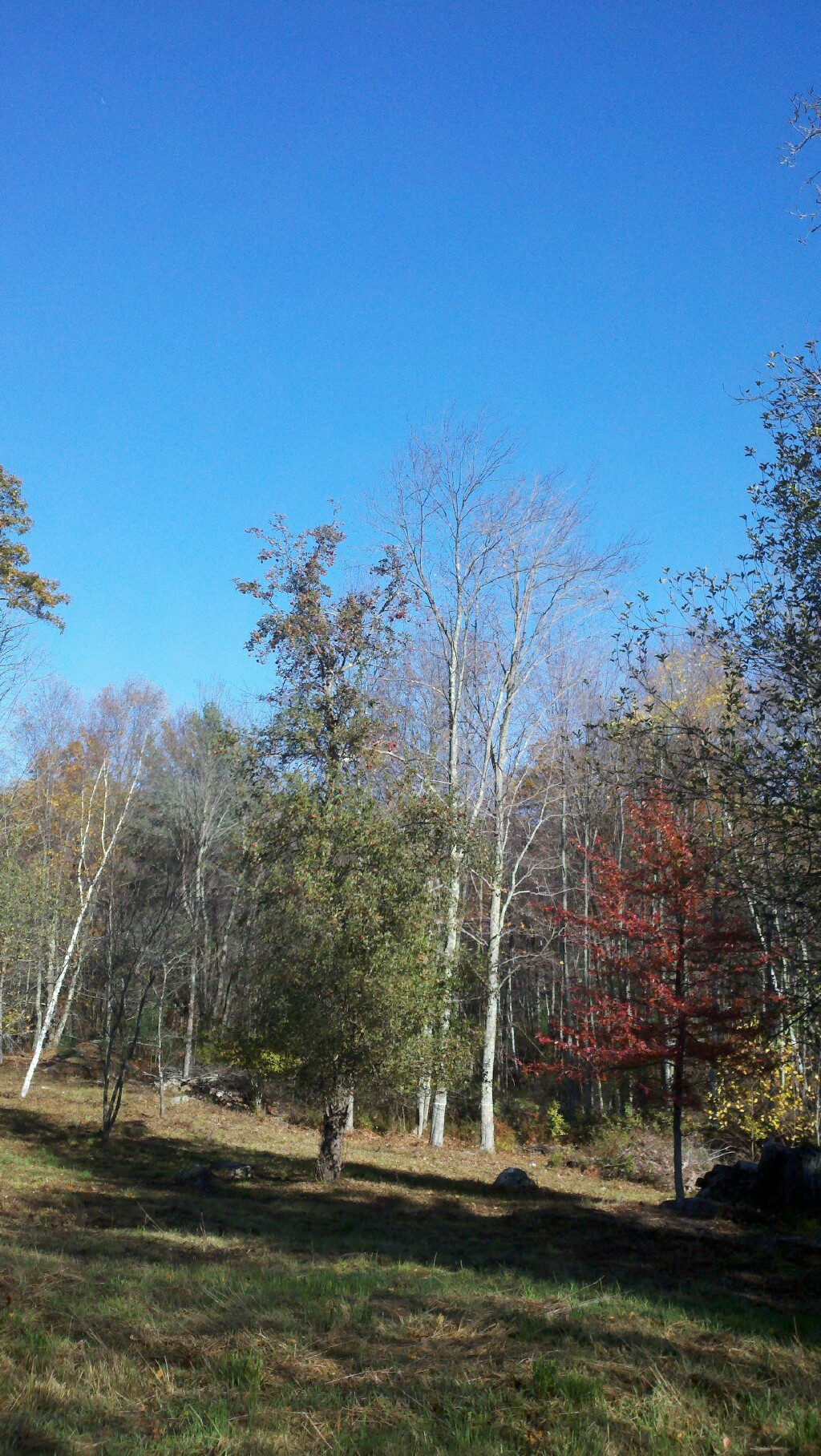
Old pasture tree standing guard over woods soon to be...pasture again. Or at least a paddock for pigs. The woods have been thinned, and line has been surveyed for a fence to enclose this area. Once that is up they will use portable fencing to rotationally graze hogs in here finish the job.
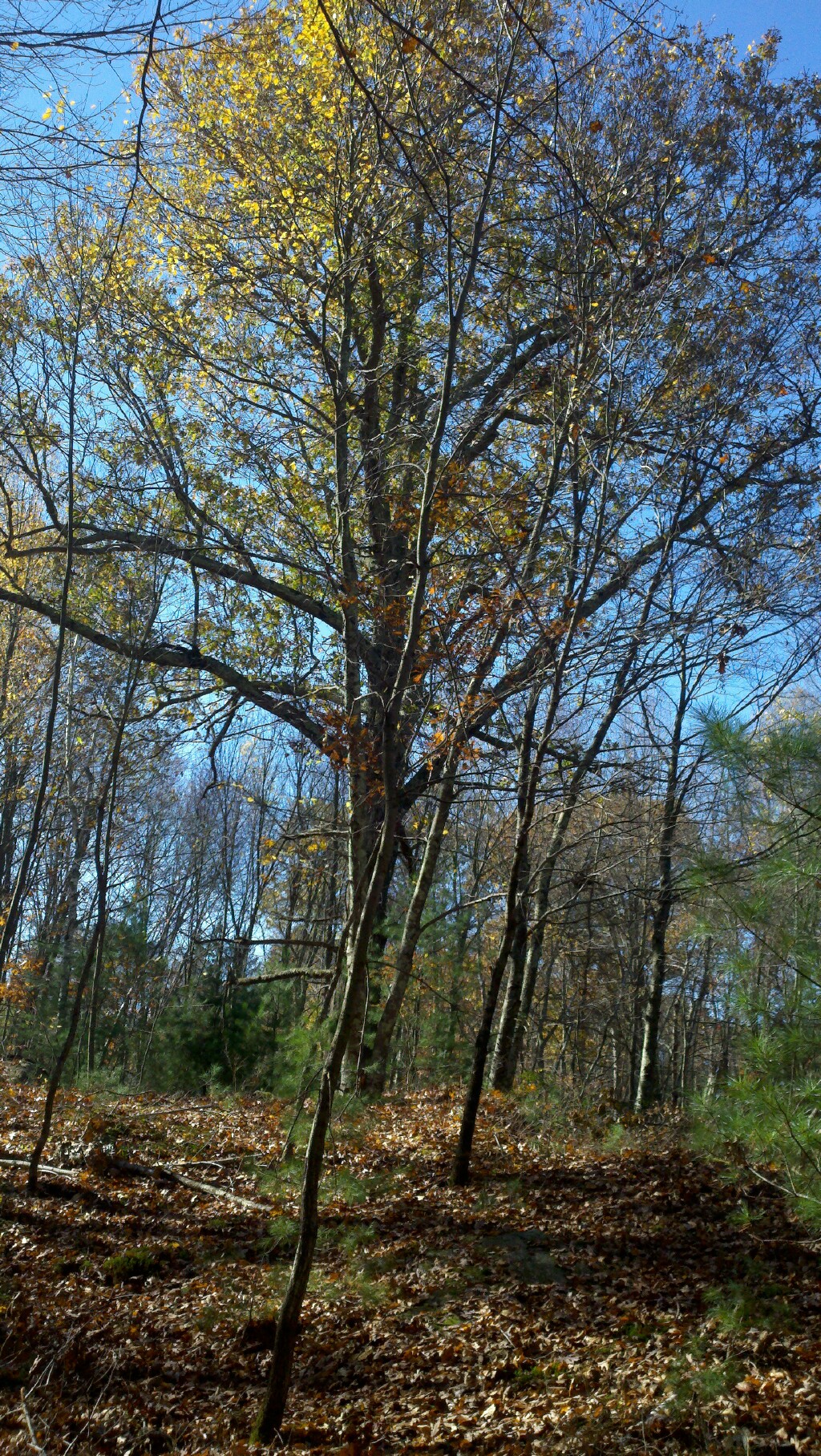
The main gardens
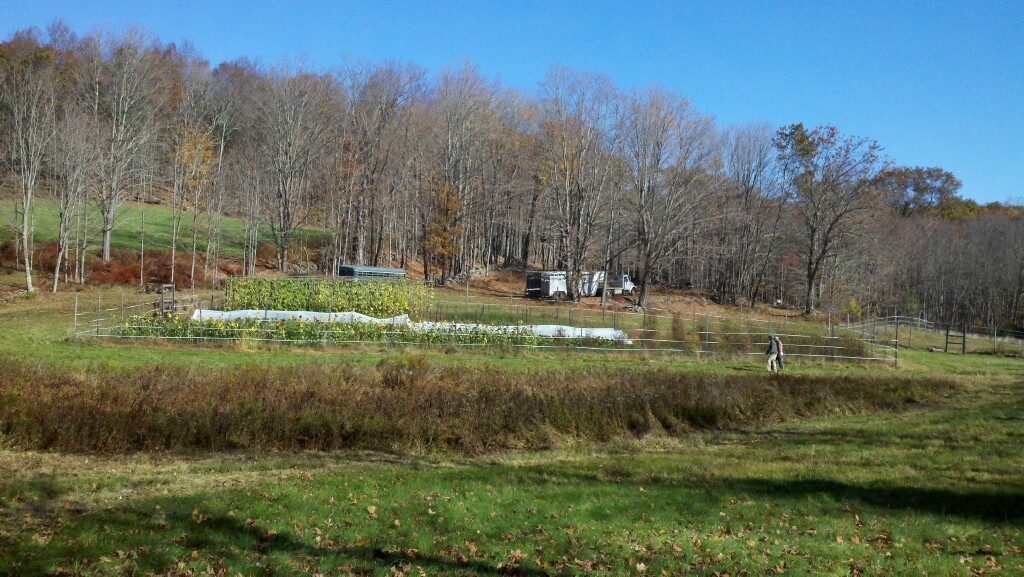
From the top of the hill (at the far end of the last picture) -- most of the trees around these hayfields are sugar maples.
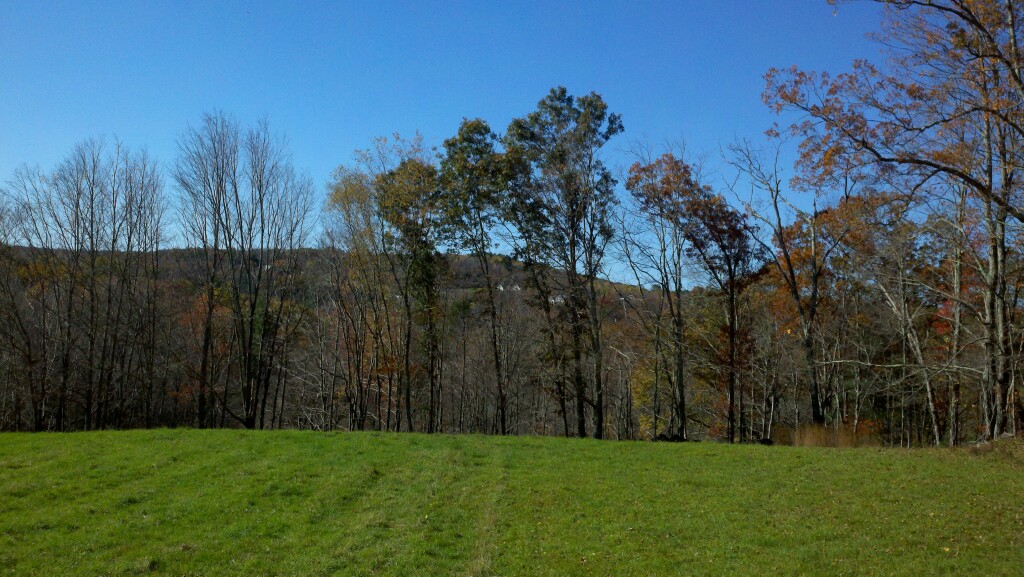
If I don't miss my guess, that's a Box Elder. Even though it's a boundary tree for Yale Forest (thus the white blaze), they girdled it just like I do -- I loathe Box Elder and only cut it for firewood if I have to get it out of my way. I swear there isn't anything that has a worse work:BTU ratio. Otherwise its best value is a dead place for wildlife to use!
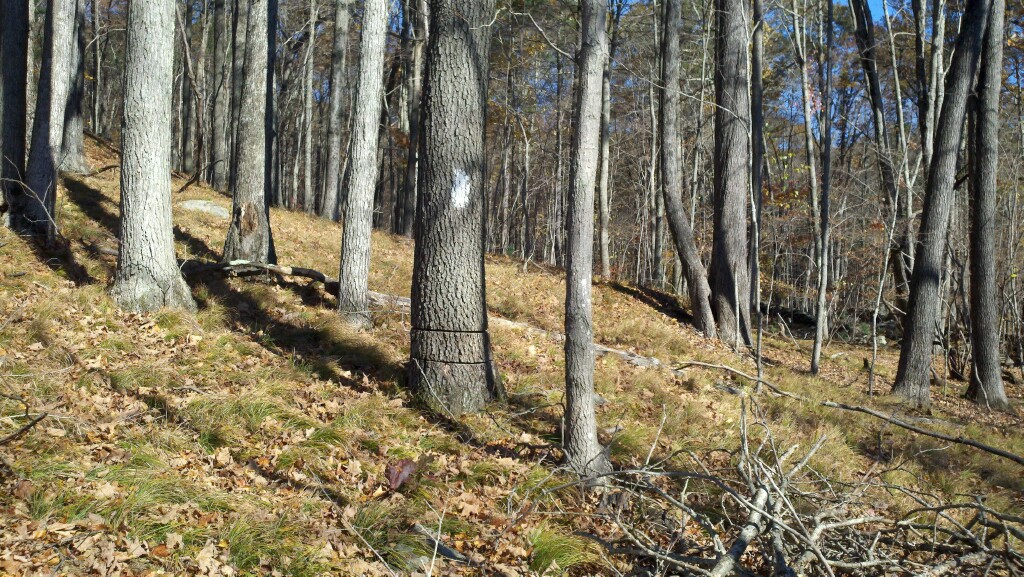
Only picture I have of Sam Rich and his horses from We Li Kit...I had issues with my camera phone shortly after :(
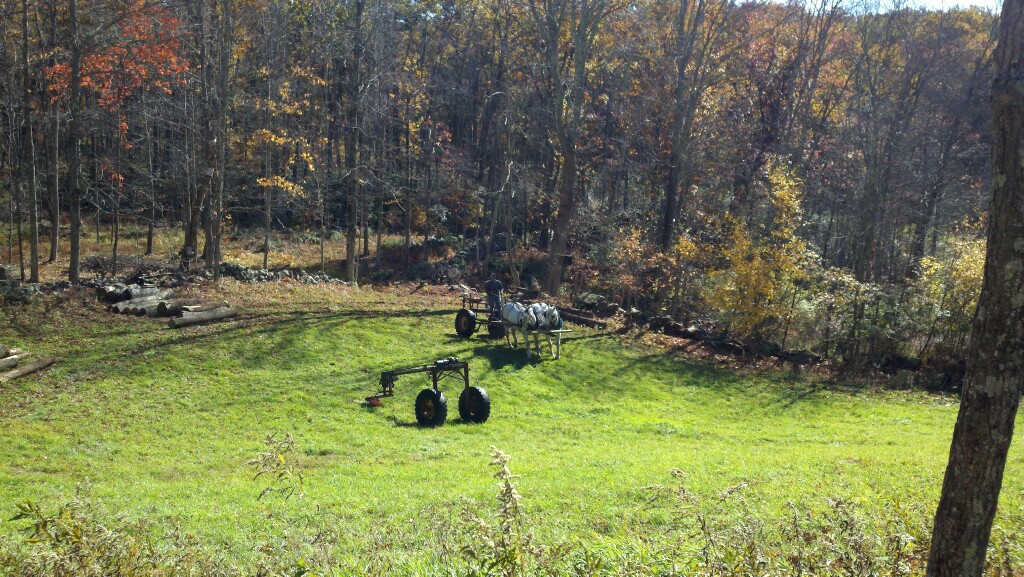
We're now on Yale Forest land where he explained how they're creating a Sugar Bush. They're using animal power for a few reasons including minimizing damage to the roots of the Sugar Maples they're keeping, but also the slower pace over several years is giving the Sugar Maples time to recover from the stress of suddenly being released as the oak overstory and other trees are removed.
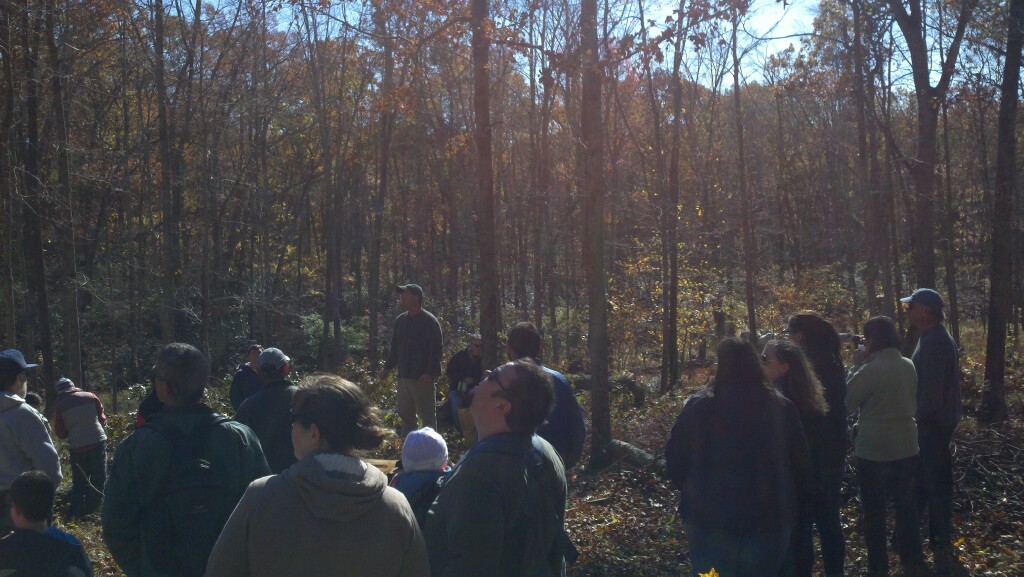
This section of the bush has had the competing species removed. Next they will be doing a further thinning of the maples. One key evaluation will be to take a test tapping of the trees -- I didn't know before that individual trees vary in their natural sugar content. If you have a choice between cutting down one tree or the other to maintain proper spacing and one tree produces 2% sap and the other 3% sap, you remove the 2% tree since it takes less wood to boil down the 3% sap to syrup.
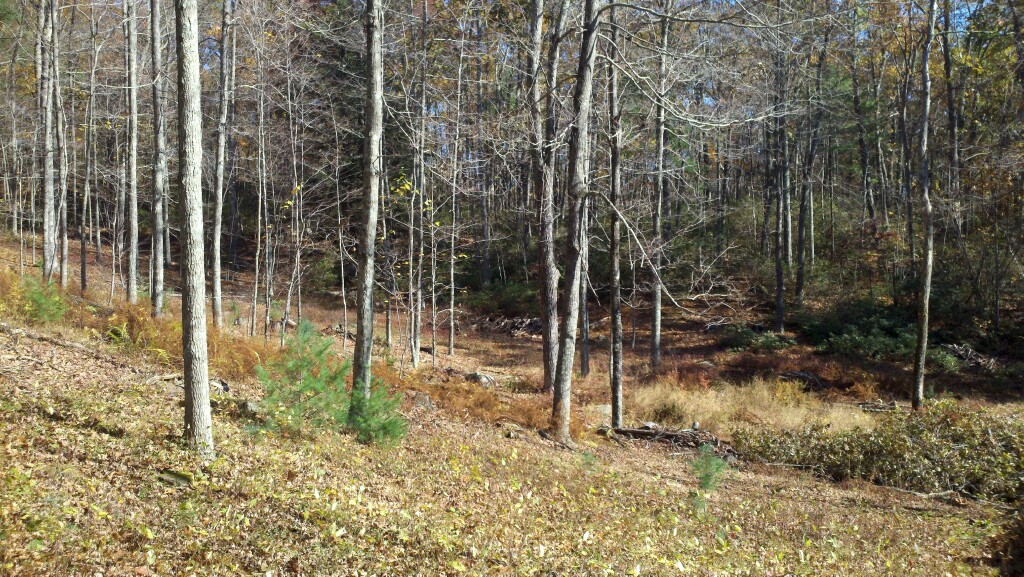
We Li Kit's Durhams (I so like that name better than Milking Shorthorns...)
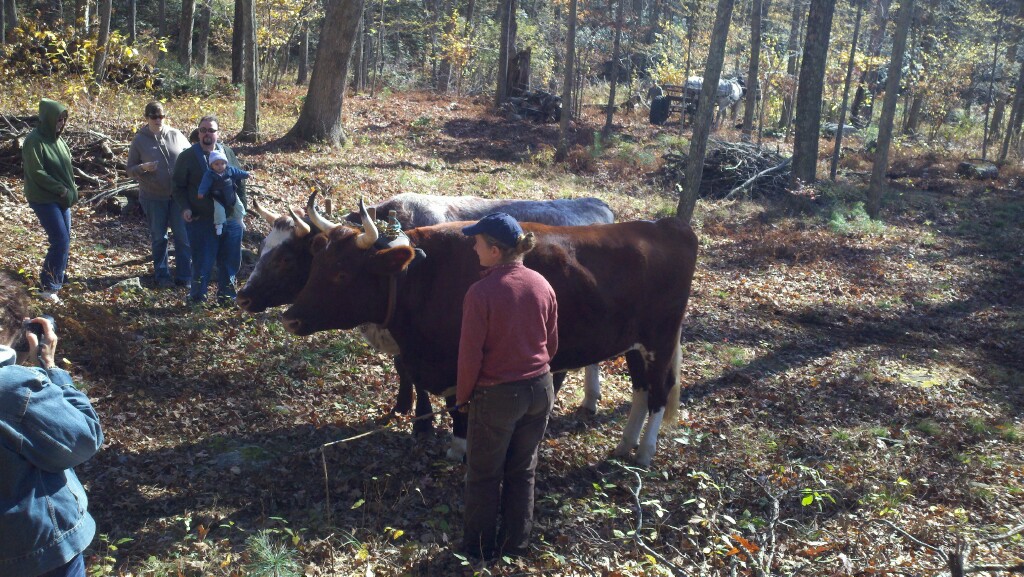
And this is my last picture before my phone went wiggy...I guess I should've brought my good camera.
That's Ray Ludwig, now I know Ray doesn't know me, and I know most if not all the folks on the walk didn't know him, but I know his reputation...and getting a primer on oxen from Ray is about the same as having Ted Williams introduce you to baseball.
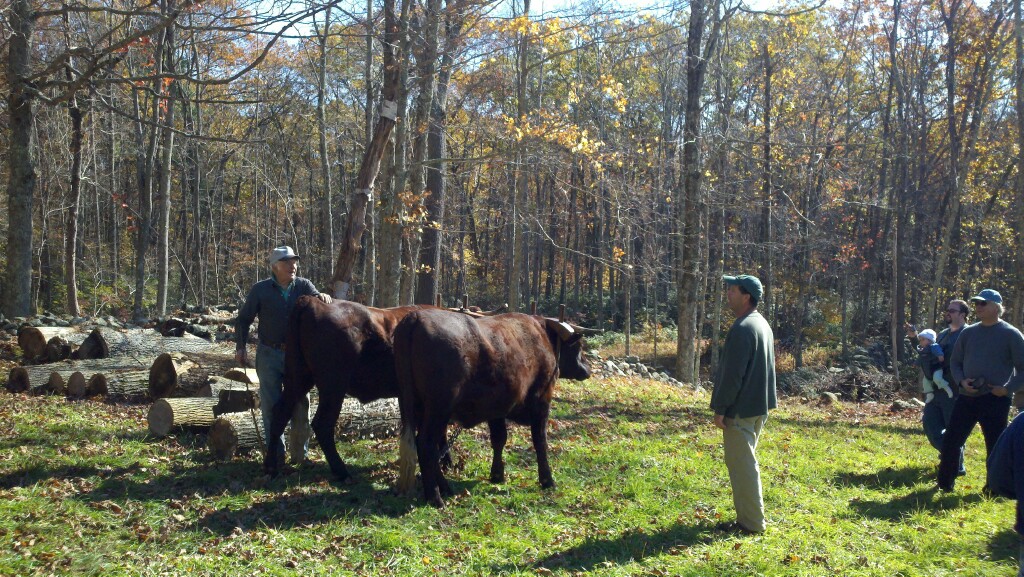
I like to look at the 1934 Aerial Photographs to see how things change over time.
The hayfields -- perhaps the west side of the north field is most interesting to me, how a treeline formed across it. Was it the conversion from horses to tractors, did the Nagys no longer feel comfortable mowing the slope? Horse drawn equipment and smaller tractors are also able to keep the sides of fields mowed back easier then today's bigger equipment...one reason fields in New England tend to get round at the edges over time unless the farmer is taking time to keep the brush cut back.
The cranberry bog also looks much more like a pond back then, than today's bog.
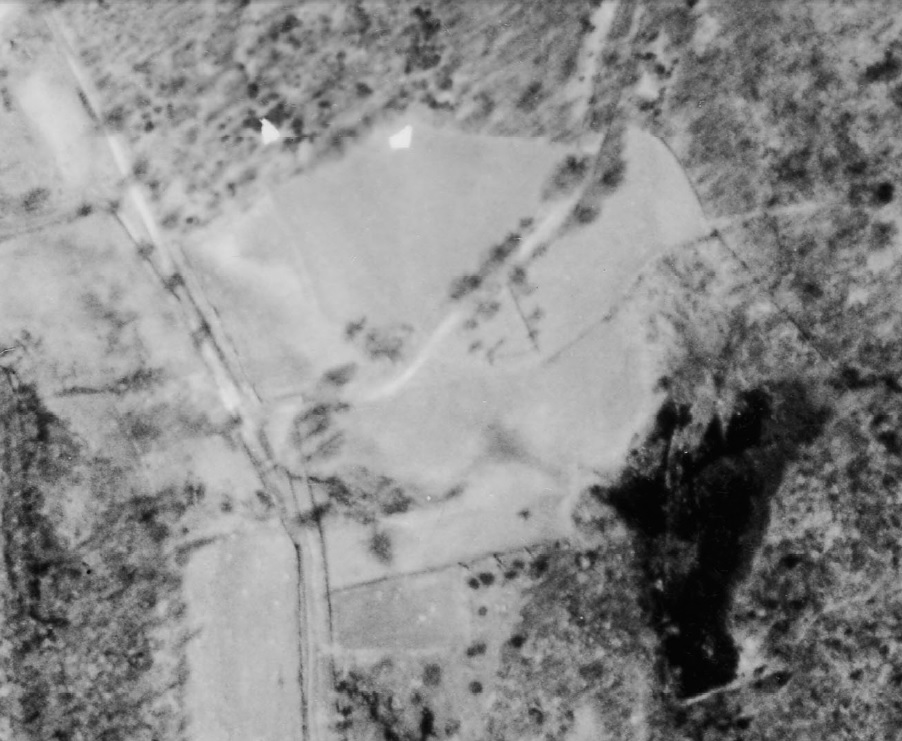
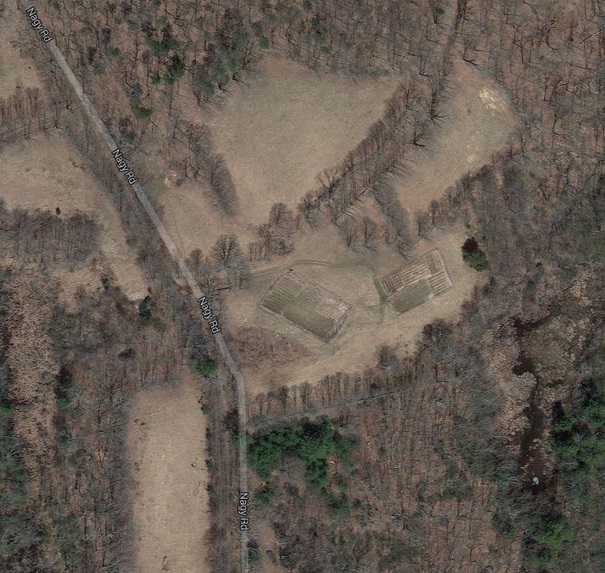
Well, we know the coop was built after 1934. You can see how much more open the pasture by the barn was.
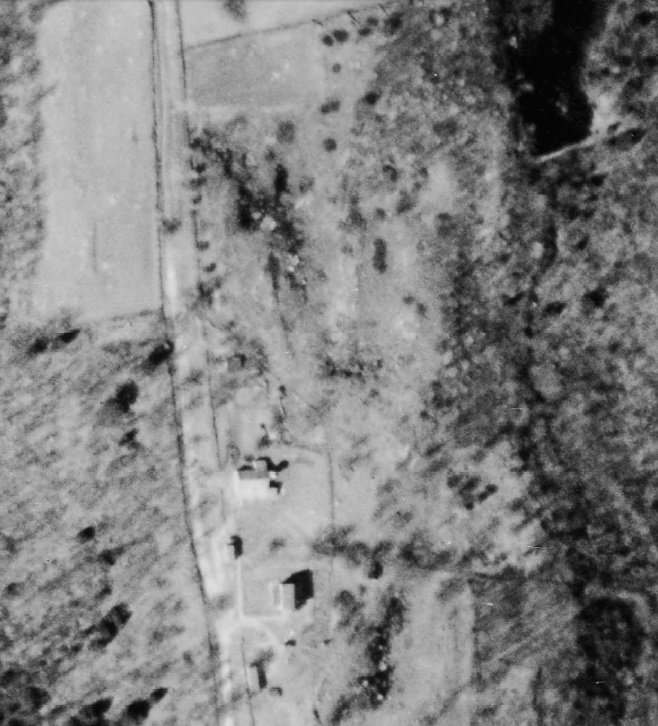
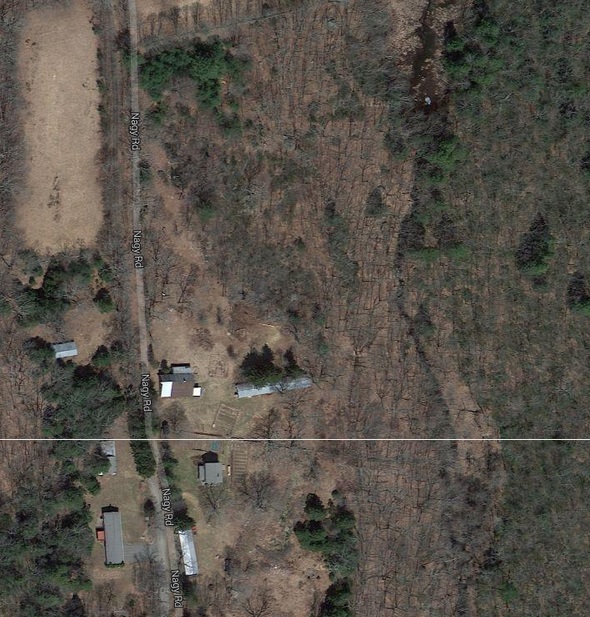
These photos are north of their farm, but they caught my eye -- you can see (I presume) White Pines taking over a hilltop pasture. Or was the soil simply very, very poor and didn't support much more then thin grasses until pines could pioneer it, instead of a succession of smaller brush first? You can see today its been thinned, but still looks grass-like under the trees. To the west you can see how white pines have taken over the pasture to the west of the long field, and have taken over what used to a hayfield in the southwest corner.
